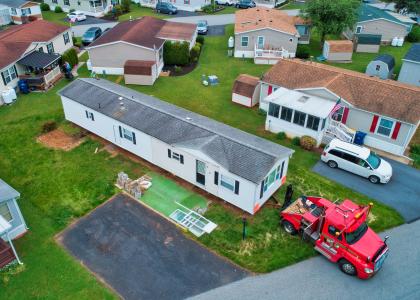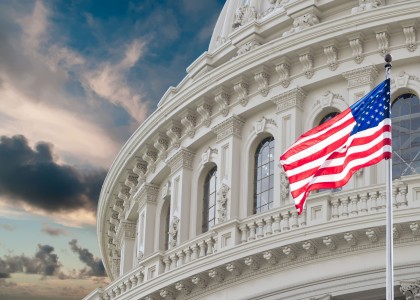Portland, Oregon is not known for its sunshine, but an award-winning campus center at Portland Community College expects to generate 347,000 kilowatt hours of electricity and save $27,000 in energy costs each year thanks to its combination of rooftop solar and energy-efficient design features.
The college built the new center with support from Energy Trust of Oregon’s Path to Net Zero Program. This initiative invites commercial building owners and businesses to set an ambitious design goal: make their buildings 40% more efficient than required by code. In return, the program provides a single point of contact for participants to receive design guidance, technical assistance, and financial incentives to offset the cost of efficient equipment and on-site solar.
Path to Net Zero is one of nine examples highlighted in ACEEE’s new report, Integrating Energy Efficiency, Solar, and Battery Storage in Utility Programs, released today. The report surveys dozens of programs nationwide, including those by the 52 largest US electric utilities, as well as statewide administrators and independent service providers. It finds 17 examples of programs that integrate energy efficiency with solar and battery storage (solar+).
“These integrated programs, although rare, hold enormous potential,” says Rohini Srivastava, lead author and senior research analyst. “They help customers save energy and money, reduce the need for electricity from fossil fuel power plants, cut greenhouse gas emissions, and by allowing some energy loads to shift, boost grid stability.”
Features of integrated programs
The report finds that statewide administrators, third-party providers, and publicly-owned utilities are able to offer integrated programs that take advantage of a flexible program design. They can simplify customer participation by streamlining services throughout a project’s duration and offer a one-stop shop where customers can navigate both energy efficiency and solar+ measures.
These programs engage with third-party solar installers and local contractor networks to coordinate program delivery. They may offer innovative and robust financing strategies like rebates for efficient technologies and loans to reduce overall project costs. Supportive rate pricing structures and pairing strategic efficiency measures such as heat pumps with solar+ technologies further reduce program costs.
On the other hand, relatively few regulated utilities offer integrated programs. They tend to offer their customers energy efficiency and solar+ in separate, siloed programs. These programs may also be subject to different approaches to valuation and cost effectiveness that might discourage integration.
However, the report identifies a handful of regulated utility-led zero energy building programs, solar rebate programs, and marketplaces. They either integrate efficiency and solar+ measures through the same provider in a single offering or coordinate offers to streamline service delivery from different providers.
Programs for underserved markets
Integrating programs makes it easier to bring efficiency and solar+ to underserved communities.
In western Massachusetts, Energy Futures Group’s Solar Access Program works with low- and middle-income owners of single-family homes to provide a heat pump and solar photovoltaic array package. [MM1] A key ingredient in this program’s success is the simplified, streamlined customer experience it provides: it connects customers to a contractor and uses only one heat pump installer and one solar installer.
The program also coordinates several federal, state, and utility incentives and offers a 10-year loan to reduce project costs. To drive participation, the program advertises at a local farmer’s market, fairs, and on a website with videos, testimonials, and financing options. After installing the systems, participants are estimated to save 40-60% on their energy bills.
Another example is from the west coast, where the Sacramento Municipal Utility District (SMUD) has partnered with affordable housing developer Pacific housing to build the 2500 R Midtown Community Development. The region’s first zero net energy community project demonstrates the benefits of integrating energy-efficient features, solar, and storage technologies.
All 34 single-family units in the community were designed to be LEED-certified and incorporate energy efficiency measures such as demand-responsive smart thermostats and remotely controllable outlets. Customers with both a solar array and lithium-ion battery saved 33% more energy than residents with just the solar system. The bundle of technologies also allows the shifting of peak loads, thus delivering benefits to the grid.
Need to identify best practices
“The success of these programs offers valuable lessons for administrators, utility managers, and others wanting to pursue similar initiatives,” says Srivastava. “We need more pilots to quantify the benefits of energy efficiency and solar+ integration and identify best practices for program design.”
The report offers these recommendations:
- Streamline administration and create a one-stop shop for customers. Integrated programs require an extra layer of administration and coordination, especially when siloed departments and teams are involved. Reduce decision fatigue for customers by streamlining the process as much as possible, from connecting with contractors and installers, to selecting products, to securing financing.
- Provide financial incentives to offset customer costs. To boost the program’s reach, incentives and opportunities should not be exclusive to high-income homeowners. Look for ways to remove typical barriers such as home ownership and strong credit.
- Offer programs in partnership with local contractors and service providers. This will help streamline the customer experience and provide more platforms where customers can be introduced to integrated programs.
- Focus on customer service to bolster engagement and participation. Programs need to clearly define the unique value proposition of integrating efficiency and solar+ technologies by emphasizing the energy and cost savings as well as the energy independence and flexibility they offer. Marketing and education can help customers understand and justify costly up-front investments
- Target programs with clear policy needs to meet capacity constraints. Utilities should evaluate their service territories to identify areas and customers that could benefit most.
- Value the program’s multiple benefits in cost-effective testing, redesigned rates, and valuations.



